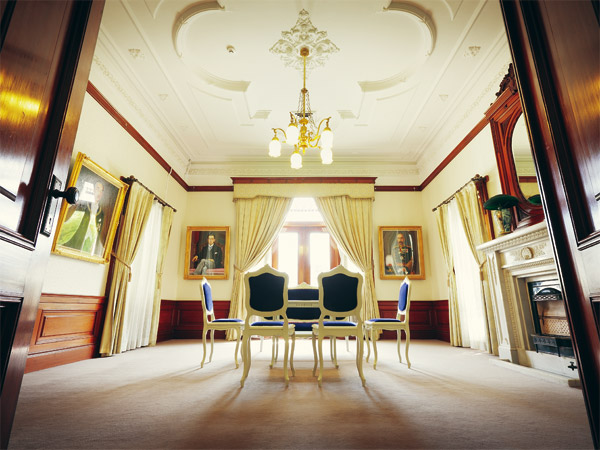Site guidance (2F)

If you visit the second floor, you will purchase the admission ticket.
It has become a one person 300 yen.
If you do not have an admission ticket is, on your request at the reception, please rise you to the second floor.
"Haiku Hall of Fame" Rooms Displaying Haiku Magazines of Major Haiku Societies and Associations in Japan and Each of Their Representative Haiku Poem on Autograph Cardboards.

Here in these two “Haiku Hall of Fame” rooms, Haiku magazines of major Haiku societies and associations are exhibited together with each of the representative Haiku poem on a autograph cardboard.
Each of such haiku group is generally organized as a haiku society or a haiku association.
There are about 800 to 1000 groups of such haiku societies or associations throughout Japan, and haiku magazines of around 200 groups are displayed in these rooms along with the representative poem of each such haiku society or association written on autograph cardboard as well as the philosophy of the respective haiku magazine. Bansuiso is the only place in the nation where a large number of haiku magazines, their representative haiku poems and philosophies are exhibited under one roof. As such, many haiku lovers have come to the “Haiku Hall of Fame” exhibitions here.
Each such representative haiku has been selected from among 3,000 to 10,000 haiku poems listed in one of the haiku magazines.
Reception room

This is the main reception room of the second floor called “Geihinshitsu”.
When you look at the ship of the stained glass on the second floor sailing in the sea while sitting on the couch in this room, you will be convinced indeed that the ship appears to be floating in front of your eyes.
In this reception room, there are two portraits hung on the wall. The portrait on the left is the figure of the Prince-Regent at 21 years of age, who became Emperor Showa later. Prince-Regent Hirohito was engaged with Lady Nagako at the time. The relationship of Countess Sadako Hisamatsu(Count Hisamatsu’s wife) and Lady Nagako was that the aunt and the niece with each other, both of whom was born into Duke Shimazu family.
The portrait on the right is the figure of Emperor Showa at the time of seventy years of age.
Emperor Showa, at the time when the National Sports Festival was held in Shikoku in 1953, stayed at Bansuiso for a few days with the Empress Nagako.
The large mirror on the mantlepiece is designed to make the room look bright and wide open.
The ceiling is decorated with relief having stunning finish and fine design, showing the skills that can be accomplished by only expert craftsmen.
Balcony

On a sunny day, you can see the spacious garden from the balcony. Please take a look at Bansuiso first by looking back at the building. It is not built in a left-right symmetry.
European gardens and buildings are traditionally symmetrical, while Japanese sense of beauty is not symmetrical in nature, as can be seen in the arrangement of the Buddhism temple such as Horyuji Temple. Even though Bansuiso was constructed as the western architecture, it expresses the unique sense of beauty.
The roof of Bansuiso is slated by the Xuanchang stone from Ogatsu district in Miyagi Prefecture. The slate used for the Bansuiso building is of the highest quality and has remained black even after many years of completion.
There are five places of lightning rods on the roof of Bansuiso, and oval gold coins of Matsuyama Domain were once melted and attached to the top of each lighting rod.
The outer walls of Bansuiso are all made of white tiles.The triple balcony is the characteristic feature of the French Renaissance style.
This Bansuiso building is located on the hillside of Shiroyama (Matsuyama Castle Mountain).
We once had good views of a flow of Ishitegawa (Ishite River) from here, but it has been blocked from our view by the hotel and other high buildings. At the grounds of Bansuiso, there was a residence of the chief retainer of Matsuyama Domain during the Edo period.
In the Meiji era there was a restaurant-inn called “Aisyotei”. In 1895, Soseki Natsume once took his lodgings for three months on the second floor of Aishotei. Soseki sent a letter to his friend, Shiki Masaoka, boasting that "My lodgeing has great views, since it is located on the hillside of Shiroyama".
This garden is the mixture of western style and Japanese style. It has been maintained nice and beautiful.
